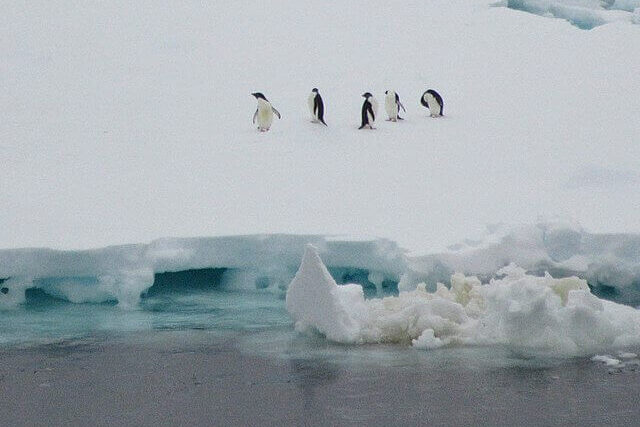
As the Antarctic descends deeper into winter, the sea ice surrounding the frigid continent should be rapidly expanding. However, this year, the growth of sea ice has been alarmingly slow, breaking records day after day.
“In the midst of its winter growth phase, Antarctic sea ice has reached a record smashing-low extent for this time of year,” according to the National Oceanic and Atmospheric Administration. “Sea ice extent is approaching a half a million square miles below the previous lowest extent, observed in 2022.”
By June 27, the seas around Antarctica were lacking a million square miles of floating sea ice compared to the long-term average for this time of year, an area four times the size of Texas.
In contrast, the Arctic is experiencing its summer season in the Northern Hemisphere, leading to the natural shrinkage of sea ice as temperatures rise. However, the Arctic sea ice has been diminishing more rapidly than usual, with a deficit of 424,712 square miles compared to the 1981-2010 average as of June 29. This area is larger than two and a half times the size of California.
When combined, the anomalies of sea ice extent in both the Arctic and Antarctic present an unsettling picture, with a total global sea ice loss of 1,417,821 square miles by June 29. This area is equivalent to more than eight and a half times the size of California.
The Arctic has been experiencing warming at a rate four times faster than the rest of the world, leading to a steady thinning and shrinking of sea ice. The connection between disappearing Arctic sea ice and human-caused climate change is well-established by scientists. However, the situation in the Antarctic is more complex.
While there is an ongoing trend of declining sea ice in the Antarctic, the situation has been highly variable in recent years. Record daily lows have been observed since April, and in February, at the end of the Antarctic’s summer season, sea ice reached a record-low minimum extent, surpassing the previous record set in 2022.
One challenge in understanding Antarctic sea ice changes is the unique environment of the continent. Unlike the Arctic, which is an ocean surrounded by land, Antarctica is a vast landmass surrounded by oceans. This difference gives rise to a multitude of complex factors that affect sea ice, including shifts in ocean currents and sea and air temperatures.
Due to the remote and forbidding nature of Antarctica, data on these factors has been relatively sparse. Additionally, satellite observations of sea ice only date back to 1979, making it difficult to separate the effects of human-caused climate change from natural variability.
While some scientists believe that the observed changes in Antarctic sea ice since 2022 could signify a significant and potentially long-lasting shift, uncertainty remains. As Ted Maksym, a climate scientist and polar oceanographer at the Woods Hole Oceanographic Institution, put it in a recent story in Wired: “Now there’s this question about: Have we got into a regime shift? A few of us are sort of speculating that that may be true, where the variability in Antarctic sea ice has changed and we might see these low sea ice extents for some time.”
But Maksym also says he and his colleagues are “watching with bated breath” to see if things will return to normal — which they could. Scientists just don’t know.
The complexity of Antarctic sea ice dynamics and the scarcity of data have made it challenging to draw firm conclusions. Scientists are closely monitoring the situation, but it will take time and further research to ascertain the true extent of the changes and the role of anthropogenic climate change in driving them.
——————————————————————————
At Natural World Fund, we are passionate about stopping the decline in our wildlife.
The decline in our wildlife is shocking and frightening. Without much more support, many of the animals we know and love will continue in their decline towards extinction.
When you help to restore a patch of degraded land through rewilding to forests, meadows, or wetlands, you have a massive impact on the biodiversity at a local level. You give animals a home and food that they otherwise would not have had, and it has a positive snowball effect on the food chain.
We are convinced that this is much better for the UK than growing lots of fast-growing coniferous trees, solely to remove carbon, that don’t actually help our animals to thrive.
This is why we stand for restoring nature in the UK through responsible rewilding. For us, it is the right thing to do. Let’s do what’s right for nature!
Donate today at https://naturalworldfund.com/ and join in the solution!

